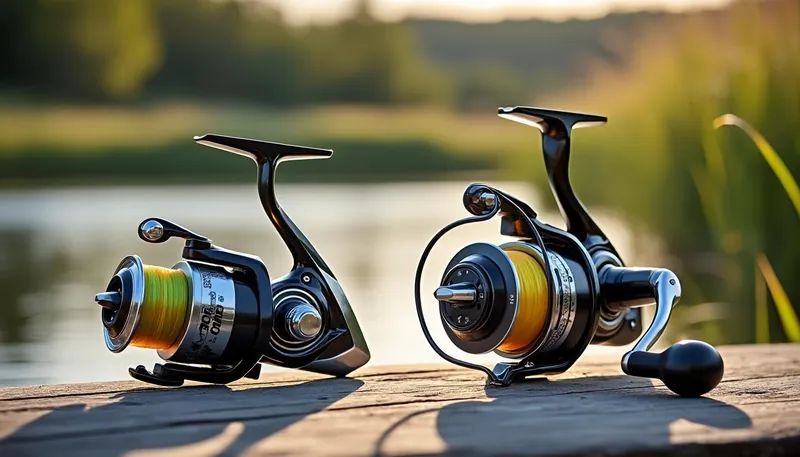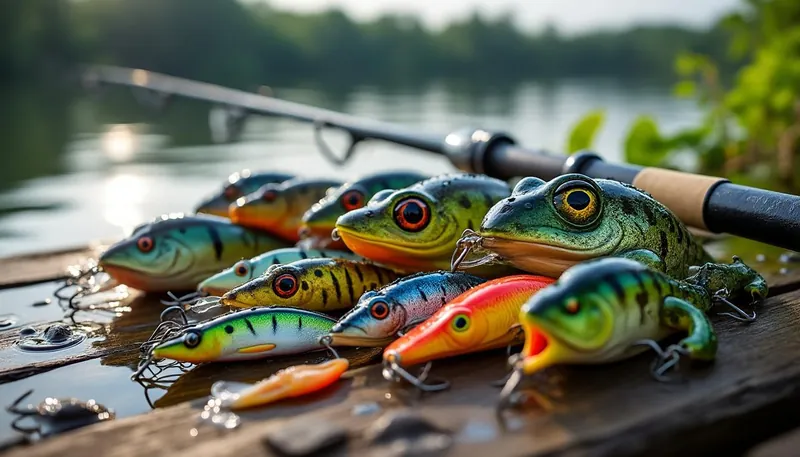Fishing enthusiasts often find themselves caught in the dilemma of choosing between spinning and baitcasting reels. Understanding the differences between these two popular types of reels is essential for any angler looking to optimize their fishing experience. Spinning reels and baitcasting reels cater to different fishing styles, skill levels, and types of fish. Throughout this article, we will unpack the distinct features of both types of reels, helping you make an informed decision tailored to your fishing needs.
- 🎣 Spinning reels are ideal for beginners due to their ease of use.
- 🔄 Baitcasting reels excel in accuracy and control for experienced anglers.
- 💰 Price ranges vary significantly, with baitcasting reels often costing more.
- 🐟 Different reel types are suited to different species and fishing techniques.
- 🏆 Understanding their pros and cons enhances your fishing effectiveness.

Understanding Fishing Reels: The Basics
A fishing reel serves crucial functions that enhance the angler’s ability to cast, retrieve, and manage fishing line. This invention, evolving since the fourth century, revolutionized fishing from primitive methods to modern techniques. A fishing reel’s primary purpose is to store the fishing line and allow for long-distance casting. The reel operates via a rotating arm and manages line tension, reducing the risk of tangles and protecting the line from wear.
Initially, fishing was performed using rudimentary methods—tying hooks to lines and simply tossing them into the water. However, advancements in fishing reel technology have opened up new dimensions for anglers. With a fishing reel, you gain the ability to target specific areas, cast farther from shore, and more effectively feel bites and nibbles. This maximizes your chances of success whether you’re fishing for piranhas in the Amazon or bass in your local lake.
| Function of Fishing Reels | Benefits |
|---|---|
| Store Line | Keeps the line organized and accessible. |
| Enable Casting | Allows for precise casting to target areas. |
| Tension Management | Prevents tangles and enhances control. |
| Retrieve Line | Helps bring in fish smoothly and efficiently. |
While there are several types of fishing reels available today, the three most common styles are spinning reels, baitcasting reels, and spin-cast reels. Each offers unique features and benefits, catering to different levels of experience and the type of fishing you plan on doing. This understanding of your tools is just the starting point of your fishing journey.
Exploring Spinning Reels: Features and Advantages
The spinning reel is arguably the most popular type among beginners and experienced anglers alike. Its design features a spool that remains stationary and a bail that opens to release line. This setup allows anglers to cast easily by simply flipping the bail open, making it ideal for those new to fishing.
Some key advantages of spinning reels include:
- 👶 User-friendly: The simple mechanism makes it easy for beginners to learn.
- 🎯 Versatile: Suitable for various fishing techniques, from finesse to heavier tackles.
- 💷 Cost-efficient: Generally more affordable than baitcasting reels, purchasing one won’t break the bank.
However, spinning reels also come with their own limitations:
- 🔄 Tangle risks: More susceptible to tangles, especially with light lines.
- ⚓ Limited to lighter tackle: Not ideal for heavy fish unless you upgrade to high-quality models.
| Spinning Reel Attributes | Details |
|---|---|
| Position | Beneath the rod |
| Design | Fixed spool with a bail |
| Best For | Light to medium fishing scenarios |
| Market Brands | Shimano, Daiwa, Pflueger, Okuma |
Ultimately, spinning reels offer a balance of affordability, user-friendliness, and versatility, making them a solid choice for many anglers. Whether you’re casting into a peaceful lake or exploring deeper waters, spinning reels adapt to your needs.

Diving into Baitcasting Reels: Features and Pros
If you’re looking for precision and control, baitcasting reels are the way to go. These reels are designed for targeting larger fish with heavier tackle. They’re commonly used in saltwater fishing and for catching species like bass, muskie, or even tuna. Unlike spinning reels, baitcasting reels are mounted on top of the rod for better line management and casting performance.
Here are some advantages of baitcasting reels:
- 🎯 Accuracy: Great for pinpoint casting, enabling you to target specific spots.
- ⚖️ Control: Adjustable tension settings give you more control over lure placement.
- 🔋 Durable: Built to withstand larger fish and harsh environments.
That said, baitcasting reels are not without their challenges:
- 🎢 Learning Curve: Beginners may struggle with backlash and spool control.
- 💸 Higher Price: Generally, they come at a higher cost compared to spinning reels.
| Baitcasting Reel Attributes | Details |
|---|---|
| Position | On top of the rod |
| Design | Rotating spool with adjustable tension |
| Best For | Heavy-duty fishing situations |
| Market Brands | Abu Garcia, Lew’s, Quantum, KastKing |
Baitcasting reels shine when it comes to performance and durability, making them a go-to choice for serious anglers targeting larger fish. However, it’s essential to invest time in learning how to operate them effectively.
Spincast vs. Spinning Reel: Which to Choose?
The spincast reel, often found on beginner poles, is a closed face reel that combines the ease of use of spinning reels with the basic reel mechanics suitable for novices. It’s equipped with a simple button that allows for a straightforward casting experience. This makes it an appealing option for kids or those just starting their fishing journey.
A head-to-head comparison shows both type reels have similar benefits:
- 🔑 Simplicity: Both are simple to cast and require minimal setup, which is great for beginners.
- 🎣 Tackle compatibility: They’re suitable for the same types of tackle.
- 💰 Price point: They usually fall within the same affordable range, making both accessible options.
However, spincast reels can have issues:
- 💔 Durability: Often made of less durable materials, they’re prone to damage under rough use.
- 💔 Limited line capacity: Less space for fishing line can restrict casting distance.
| Spincast Reel Features | Details |
|---|---|
| Design | Closed face with a button release |
| Best For | Children and beginners |
| Ease of Use | Very easy, ideal for teaching |
| Market Brands | Penn, Okuma, Pflueger |
For beginners or those looking for simplicity, a spincast reel is a solid path to enjoying fishing without the complexities of more advanced systems. However, as angling skills improve, making the transition to spinning or baitcasting setups opens a wider variety of fishing styles and experiences.
Final Thoughts: Choosing the Right Reel for Your Fishing Needs
Your choice between spinning and baitcasting reels ultimately depends on your fishing style, the species you’re targeting, and your personal comfort with each type. For most beginners, starting with a spinning reel offers a user-friendly pathway to the world of fishing. Once you’ve honed your skills and want to venture into larger species or more specialized techniques, a baitcasting reel may serve you well.
Remember, each reel has its strengths and weaknesses—factor these into your decision. Additionally, consider your budget, and explore reputable brands like Shimano, Daiwa, and Abu Garcia, which provide quality products across all categories. Investing in a fishing reel that feels right in your hands will make a world of difference in the enjoyment and success of your fishing outings.
What are the key characteristics of spinning reels?
Spinning reels are user-friendly, versatile, and typically more affordable, making them ideal for beginners.
When should I use a baitcaster?
Baitcasting reels excel in accuracy and control, making them ideal for targeting larger fish in specific areas.
How do I prevent tangles with spinning reels?
To reduce tangles, always ensure the line is spooled correctly and use the appropriate weight and tackle.
Can spincast reels be used for saltwater fishing?
While spincast reels can be used for light saltwater fishing, they are generally less durable against harsher conditions.
Which brands are best for fishing reels?
Top brands include Shimano, Daiwa, Abu Garcia, Penn, and Okuma, known for their reliability and innovation.


